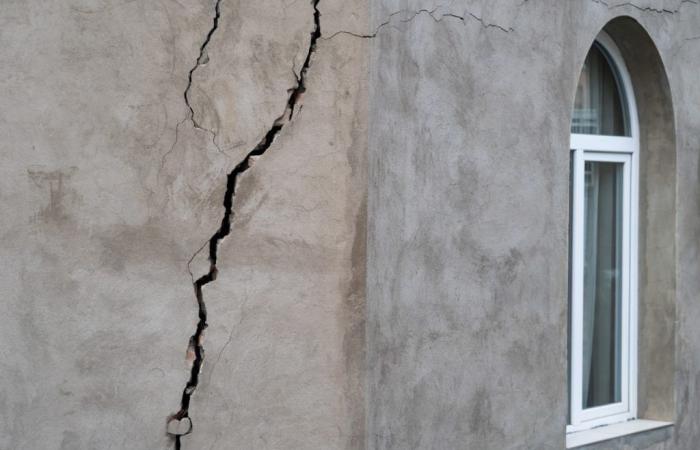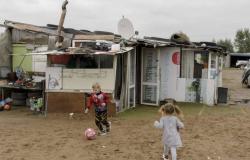In France, the Environmental Code identifies five seismicity zones, which vary from very low to high. With the exception of the Antilles, no region is classified as high risk (level 5). However, certain areas, such as the majority of Haute-Savoie and a large part of Savoie, are classified in zone 4, indicating seismic activity considered “average”. But then what are the major shocks that have hit the Venice of the Alps in recent years?
The 1996 earthquake: the biggest recorded
On July 15, 1996, a powerful earthquake with a magnitude of 5.3 on the Richter scale (which goes up to 9) struck Annecy and its surroundings. The epicenter was located in Épagny, a few kilometers from the city, and the tremors were felt as far away as Geneva, in Ain, Savoie and Jura. This earthquake was caused by the activity of the Vuache fault, an active geological zone in the region.
The material damage was considerable: collapsed chimneys, broken windows, visible cracks on several buildings and damaged cars. The Saint-Pierre-aux-Liens church in Épagny and its presbytery have also suffered heavy damage. Despite the extent of the damage, the repair costs of which exceeded 93 million euros (around 400 million francs at the time), only minor injuries were reported.
This event deeply marked the memory of the inhabitants. If the earthquake had struck the day before, during the July 14 festivities, the consequences could have been much more serious. It was not the first time that the region had suffered such a shock: in December 1994, another earthquake of magnitude 5.1 had already caused damage, creating great concern throughout the region.
List of earthquakes recorded in Annecy in recent years
In Haute-Savoie, the last earthquake took place this year, on June 7. The village of Dingy-Saint-Clair, near Annecy, was the site of an earthquake measuring 3.3 on the Richter scale. Several tremors were recorded during the night, between 12:25 a.m. and 7:03 a.m. According to the National Seismic Monitoring Network (Rénass), the strongest tremor occurred at 6:36 a.m., while five other tremors, less intense, were measured between 1.1 and 1.8.
Before this event, Annecy and its surroundings had already been shaken by several earthquakes, marking the minds of the inhabitants:
- 1572 at 10:55 p.m. : Annecy
- June 10, 1750 : Rumilly – Intensity 4.5
- May 17, 1818 : Rumilly
- May 13, 1833 at 2:00 a.m : Annecy – Intensity 3
- August 7, 1839 at 8:50 a.m. : Annecy – Precursor*
- August 8, 1839 at 3:30 a.m. : Annecy – Precursor*
- August 9, 1839 at 8:00 a.m. : Annecy – Precursor*
- August 11, 1839 at 8:00 p.m. : Annecy – Intensity 7
- August 16, 1839 at 6:30 p.m. : Annecy – Replica*
- August 21, 1839 at 3:00 a.m. : Annecy – Replica*
- August 23, 1839 at 11:10 a.m. : Annecy – Replica*
- August 27, 1839 : Annecy – Replica
- March 22, 1840 at 8:15 p.m. : Annecy – Replica*
- March 5, 1847 at 11:22 p.m. : Annecy – Intensity 4
- July 25, 1879 : Annecy
- July 26, 1879 : Annecy
- September 27, 1879 at 4:00 a.m. : Annecy – Intensity 3.5 – Swarm of tremors*
- October 15, 1879 : Annecy
- March 29, 1947 at 3:58 a.m. : Saint-Martin-de-Bellevue – Intensity 4.5
- November 23, 1950 at 11:00 p.m. : Dingy-Saint-Clair – Intensity 4
- September 10, 1955 at 2:38 a.m. : Annecy – Intensity 4
- December 14, 1994 at 8:56 a.m. : Les Villards-sur-Thônes – Intensity 6
- August 2, 1995 at 3:05 a.m. : Sillingy – Intensity 4
- August 21, 1995 at 7:32 p.m. : Sillingy – Intensity 3.5
- July 15, 1996 at 12:13 a.m. : Épagny – Intensity 7
- July 23, 1996 at 4:08 a.m. : Épagny – Intensity 5 – Replica*
- June 24, 2024 at 6:36 a.m. : Dingy-Saint-Clair – Intensity 3.6
The different types of earthquakes:
There are several types of earthquakes, each with specific characteristics and causes. Here’s what they mean:
- Precursor : It is a low intensity earthquake that occurs before a major earthquake. It often serves as a harbinger of a larger seismic event to come, although it is difficult to recognize before the main earthquake occurs.
- Replica : This term designates an earthquake that occurs after a main earthquake, in the same region. Although they are often less powerful than the initial earthquake, aftershocks are part of the natural process of tectonic readjustment.
- Swarm of tremors : Unlike a single earthquake, a swarm is characterized by a series of small earthquakes that occur over a short period of time. There is not necessarily a main earthquake, and the tremors can vary in intensity, but they remain localized in the same area.
The current situation and future risks
Currently, Annecy is monitored by modern seismic networks which make it possible to detect tectonic movements in real time. Although the region is not among the most seismically active in France, it is crucial not to neglect the risks. Experts believe it is still possible to feel earthquakes of low to medium intensity, due to tectonic tensions that persist in the Alps.
Although it is impossible to predict future earthquakes, it is interesting to note that, during the last 7 days, 53 earthquakes were detected within a radius of 100 km around Annecy.
Discover all the earthquakes in the world
Earthquakes are common on our planet, with around 290,000 events recorded each year, which equates to around 794 per day. Of these, more than 150 reach a magnitude greater than 6 on the Richter scale, making them potentially destructive. In France, there are more than 4,000 earthquakes each year, around 30 of which are actually felt by the population.
Are you interested? Take a look at the AllQuake site, which lists all earthquakes!
Source of the list: www.sisfrance.net






